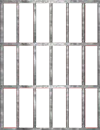- 37
- 16
Here is the cipher. The question  has been scrambled from its original form.
has been scrambled from its original form.
Here is the key:
The first  to give me the answer
to give me the answer  to the question
to the question  will get 10k MB and a unique badge. The only hint I will give is that I started with the Caesar
will get 10k MB and a unique badge. The only hint I will give is that I started with the Caesar  cypher method. Badge
cypher method. Badge  should
should  be ready
be ready  in the next few days or so. The next 4 will get 10k mb.
in the next few days or so. The next 4 will get 10k mb.
!ghosts would  someone in badgemaxxers mind pinging them please?
someone in badgemaxxers mind pinging them please?
- 9
- 40
I'm incredibly proud to announce that I've accepted an offer for my dream at @OpenAI
— Roko (@RokoMijic) May 15, 2024
Along with my new colleagues Nick Land and Richard Sutton I'll be helping to usher in a new era in the history of the universe. I'm so excited!
I'll be serving as the new head of… pic.twitter.com/9sgYcvXY26
- 21
- 25
hi guys, i am looking for sites to add to my webring! gimme ur urls :p thanks @X for suggsting neocities!
- 33
- 53
- 73
- 68
How Freedesktop/RedHat harass other projects into submission
https://blog.vaxry.net/articles/2024-fdo-and-redhat
Freedesktop/RedHat's CoC team is worse than you thought
https://blog.vaxry.net/articles/2024-fdo-and-redhat2
Strags respond
https://drewdevault.com/2024/04/09/2024-04-09-FDO-conduct-enforcement.html
- 23
- 35
The Official RDrama Computer Science Reading Group
My dear !codecels, hello and welcome to the first meeting of RDrama's Computer Science Reading Group! Here's the idea - we (read: I) pick a computer science textbook, then post a list of sections and exercises from that textbook each week. In the thread, feel free ask questions, post solutions, and bully people for asking stupid questions or posting stupid solutions. If you don't want to read along, I'll post the complete exercises in the OP, so you can solve them without needing to read the book.
SICP
The book I'm starting with is 'the Structure and Interpretation of Computer Programs' (abbreviated SICP). It's a software engineering textbook written by Gerald Jay Sussman and Hal Abelson from MIT. The book builds programming from the ground up: starting with a very simple dialect of Scheme and growing it into a language with lazy evaluation, object-orientation and a self-hosting compiler. It's a fun book: the exercises are hands-on and interesting, the writing is informative without being droll, and both the book itself and a corresponding lecture series (complete with a 80s synth rendition of 'Also Sprach Zarathustra') are available for free online.
Languages
The book uses (a small subset of) Scheme as its primary language, but feel free to try using a different language. The book's dialect of scheme is available through Racket, but most lisps will work with only minor changes. Other dynamically-typed, garbage-collected languages with higher-order functions will also not require much hacking: there is an edition written in JavaScript  , as well as a partial adaptation to python
, as well as a partial adaptation to python  . High-level, statically typed languages might also work: Java/Kotlin/C#
. High-level, statically typed languages might also work: Java/Kotlin/C#  seem doable, but I don't know those languages well. Strongly typed languages like Haskell will require some real hacks, and I'd avoid doing it in C, C++ or Rust.
seem doable, but I don't know those languages well. Strongly typed languages like Haskell will require some real hacks, and I'd avoid doing it in C, C++ or Rust.
Exercises
The book is split into five chapters:
- Building Abstractions with Procedures
- Building Abstractions with Data
- Modularity, Objects and State
- Metalinguistic Abstraction
- Computing with Register Machines
This week, I'll be posting exercises from the first chapter. The chapter is pretty easy for those familiar with programming already, so I just want to get it out of the way. Here are the selected exercises:
Exercise 1.8
Newton's method for cube roots is based on the fact that if
yis an approximation to the cube root ofx, then a better approximation is given by the value(x/y² + 2y) / 3. Use this formula to implement a cube-root procedure which is wrong by at most0.01.
Exercise 1.12
The following pattern of numbers is called Pascal's Triangle.
1
1 1
1 2 1
1 3 3 1
1 4 6 4 1
...
The numbers at the edge of the triangle are all 1, and each number inside the triangle is the sum of the two numbers above it. Write a procedure that computes elements of Pascal's triangle.
Exercise 1.18
Devise a procedure generates an iterative process for multiplying two integers in terms of adding, doubling, and halving and uses a logarithmic number of steps.
Exercise 1.31
Write a procedure called
productthat returns the product of the values of a function at points over a given range (product(l, r,step,f) = f(l) * f(l+step) * f(l + 2 * step) * ... * f(r)). Show how to definefactorialin terms ofproduct. Also use product to compute approximations to using the formulaπ/4 = (2 * 4 * 4 * 6 * 6 * 8 ...) / (3 * 3 * 5 * 5 * 7 * 7 ...)
Exercise 1.43
If
fis a numerical function andnis a positive integer, then we can form thenth repeated application off, which is defined to be the function whose value atxisf(f(...(f(x))...)). For example, iffis the functionx → x + 1, then thenth repeated application offis the functionx → x + n. Iffis the operation of squaring a number, then thenth repeated application offis the function that raises its argument to the2 * nth power. Write a procedure that takes as inputs a procedure that computesfand a positive integernand returns the procedure that computes thenth repeated application of f. Your procedure should be able to be used as follows:repeated(square,2)(5) = 625
Have fun! 
- 12
- 44
Potential sites to farm drama 
- 26
- 23
TLDR
Bend uses "interaction combinators" to parallelize your code
It's written in Rust and looks like Python
No loops. You use bend to structure data and fold to parse it recursively
You can use your GPU (or extra CPU cores) to run shiet in parallel
- 58
- 142
- 14
- 30
- 66
- 46
- 30
- 39
All core systems are now on https://t.co/bOUOek5Cvy pic.twitter.com/cwWu3h2vzr
— Elon Musk (@elonmusk) May 17, 2024
- 8
- 10
This is a bit niche but nobody else on the (publicly indexed non-groomercord) internet has asked about it so might as well ask the tards here. I use a pair of 2nd gen airpods (third set I've purchased, they fit my ears better than any of the other ones) and they have some kind of super annoying artificial volume limitation on windows 11. They're about 1/2 as loud as they should be at max win11 system and max application volume vs my iphone. I can get around this with amp software gain boosters but this obviously adds lots of distortion. Has anyone else encountered this or found a solution?
- 35
- 55
- 37
- 34
Hashcat is the world's fastest and most advanced password recovery utility, supporting five unique modes of attack for over 300 highly-optimized hashing algorithms. hashcat currently supports CPUs, GPUs, and other hardware accelerators on Linux, Windows, and macOS, and has facilities to help enable distributed password cracking.
- 16
- 22
for the record, im currently at ~70% that we're all dead in 10-15 years from AI. i've stopped saving for retirement, and have increased my spending and the amount of long-term health risks im taking
— Aella (@Aella_Girl) May 15, 2024



 Unique Badge!
Unique Badge! 
 to solve this Cipher! First
to solve this Cipher! First 











 from contributing to freedesktop : linux
from contributing to freedesktop : linux  | Man fails to respect
| Man fails to respect  the CoC and gets banne by loser
the CoC and gets banne by loser  wokescold with an email job
wokescold with an email job












 I'm like a dog chasing waterfalls
I'm like a dog chasing waterfalls




 gets a funny email and has a spergout and shuts down their project
gets a funny email and has a spergout and shuts down their project 














 twitter
twitter  has fully switched over to x.com
has fully switched over to x.com 











 hashcat works. EDIT: IT DOESN'T.
hashcat works. EDIT: IT DOESN'T. 






